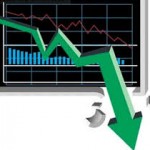In Part I, we reviewed the SEC’s journey toward reforming the regulatory framework of U.S. money-market funds in an attempt to proactively mitigate the financial risk that emerged when the Reserve Primary Fund “broke the buck” in 2008 and helped to “freeze” the nation’s short-term credit network. The situation was volatile enough to prompt the U.S. Treasury to intervene to bailout the fund and stabilize the financial markets.
Although the reforms proposed on June 5th by SEC Chair, Mary Jo White, must move through a public comment period and then a thorough review by the SEC (it reviews all reform-related issues in light of the public comments it receives) before a final regulatory revision can be finalized and approved, you may want to begin to consider alternative investment instruments for your idle cash. Even if you are convinced that no significant change will be made to the so-called “retail” money-market funds – consider this sobering fact:
According to an internet search of current rates, the posted yield on major brokerage money market funds (Fidelity, Vanguard, Schwab, E-Trade, and TD Ameritrade) was an ultra-puny 0.01%! At that rate, the interest earned hardly justifies the cost of calculating and printing monthly statements.
Another way of analyzing investment return is to determine the length of time required to “double” your principal. Even if the rate was 5 times higher (at .05%), it would require 1440 years to double your money!
Given this glaring reality, you might agree that it behooves investors to consider alternative investment choices that fit one’s risk tolerance and investment objectives. During the next few weeks, I will be offering information on a range of options that you might consider attractive. I assure you that some of these possibilities will not be suitable for you, given your unique personal and financial profile. So (as always) consult with your preferred, trusted advisor prior to making any changes in your investment allocation.
Today we will consider four funds that most closely match the key metrics of money-market funds (all fund metrics are “as of” June 7th):
ULTRA SHORT BONDS
PIMCO Enhanced Short Maturity Strategy (MINT)
Effective Duration: [1] 0.96 years
SEC 30-day Yield: 0.57%
Description: Invests at least 65% of its total assets in a diversified portfolio of Fixed Income Instruments of varying maturities (which may be represented by forwards). Issuers of the instruments held can include various U.S. and non-U.S. public- or private sector entities. [All fund descriptions are from YahooFinance.com].
GRAPH: The graph above is a two-year chart of MINT. It is a relatively established fund that has the highest duration of the four, but has been a decent performer. The red line is the 50-day EMA; the green line is the 200-day EMA.
SPDR Barclays 1-3 Month T-Bill (BIL)
Modified Adjusted Duration
(price sensitivity) 0.13 years
SEC 30-day Yield: -0.09%
Description: The fund employs a replication strategy in seeking to track the performance of Barclays 1-3 Month U.S. Treasury Bill Index. It generally invests at least 80% of total assets in securities comprising the index or in securities that the investment adviser determines have economic characteristics that are substantially identical to the economic characteristics of the securities that comprise the index.
GRAPH: the chart above shows the price history of BIL. Don’t be fooled by what appears to be steadily declining prices. If you check the range, you’ll see that it is narrow. It enjoys a low duration, but also a (currently) low (negative) yield.
Guggenheim Enhanced Short Duration Bond (GSY)
Average Duration 0.37 years
SEC 30-day Yield 1.02%
Description: The fund will invest at least 80% of its net assets in fixed income securities. It uses a low duration strategy to seek to outperform the Barclays Capital1-3 Month U.S. Treasury Bill Index, in addition to providing returns in excess of those available in U.S. Treasury bills, government repurchase agreements, and money market funds, while seeking to provide preservation of capital and daily liquidity. (The fund may invest, without limitation, in short-term instruments such as commercial paper and/or repurchase agreements.)
GRAPH: The graph above is for GSY. It has a relatively low standard deviation, but also low volume (therefore relatively low liquidity). On the plus side, it has duration one third that of MINT and (currently) a higher yield.
SHORT GOVERNMENT BONDS
iShares Barclays Short Treasury Bond (SHV)
Effective Duration 0.40 years
SEC 30-day Yield: 0.00%
Description: The fund generally invests at least 90% of its assets in the bonds of the Barclays U.S. Short Treasury Bond Index and at least 95% of its assets in U.S. government bonds. The underlying index measures the performance of public obligations of the U.S. Treasury that have a remaining maturity of between one and 12 months.
GRAPH: The graph above depicts the price action of SHV. Note the (relatively) stable (non-volatile) price pattern; however, the current yield is lower than that of money-market funds.
I suggest that you print this report and then watch for further articles here (in the days ahead) offering additional alternatives for your review. Months ago, I gave up on money-market funds for my portfolio (but not, of course for my mother’s assets). Instead, I pieced together a mix of fixed income funds that, in the aggregate, offers me a higher yield at an acceptable level of risk. I pay particular attention to the combined duration.
To help you discern the relative rewards and risks of these funds, here is a side-by-side chart of the four options. The MINT fund is the solid blue pattern. GSY is the brown line; SHY is the light green line; BIL is the light blue line. I hope you have found this helpful.
DISCLOSURE: The author owns shares of MINT, but none of the other funds. All of the price charts are created through YahooFinance.com. The fund yield and duration metrics are from ETFTrends.com.
Submitted by Thomas Petty MBA CFP
[1] DURATION is a measure of fixed income investment risk. There are two main types of “duration”: a) “weighted average of time until cash flows are received” (measured in years) and b) “price sensitivity (the percentage change in price for a given unit change in yield)”. When yield is continuously compounded, the values will be numerically equal. The “weighted average of time” measure of duration is the most commonly used. The higher the number, the greater the risk.
Related Posts
Also on Market Tamer…
Follow Us on Facebook

 Tesla Reports Automotive Revenue Down 20%, but the Stock Rises on Positive News
Tesla Reports Automotive Revenue Down 20%, but the Stock Rises on Positive News



